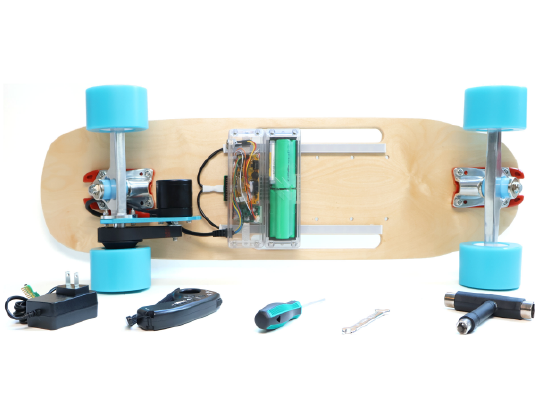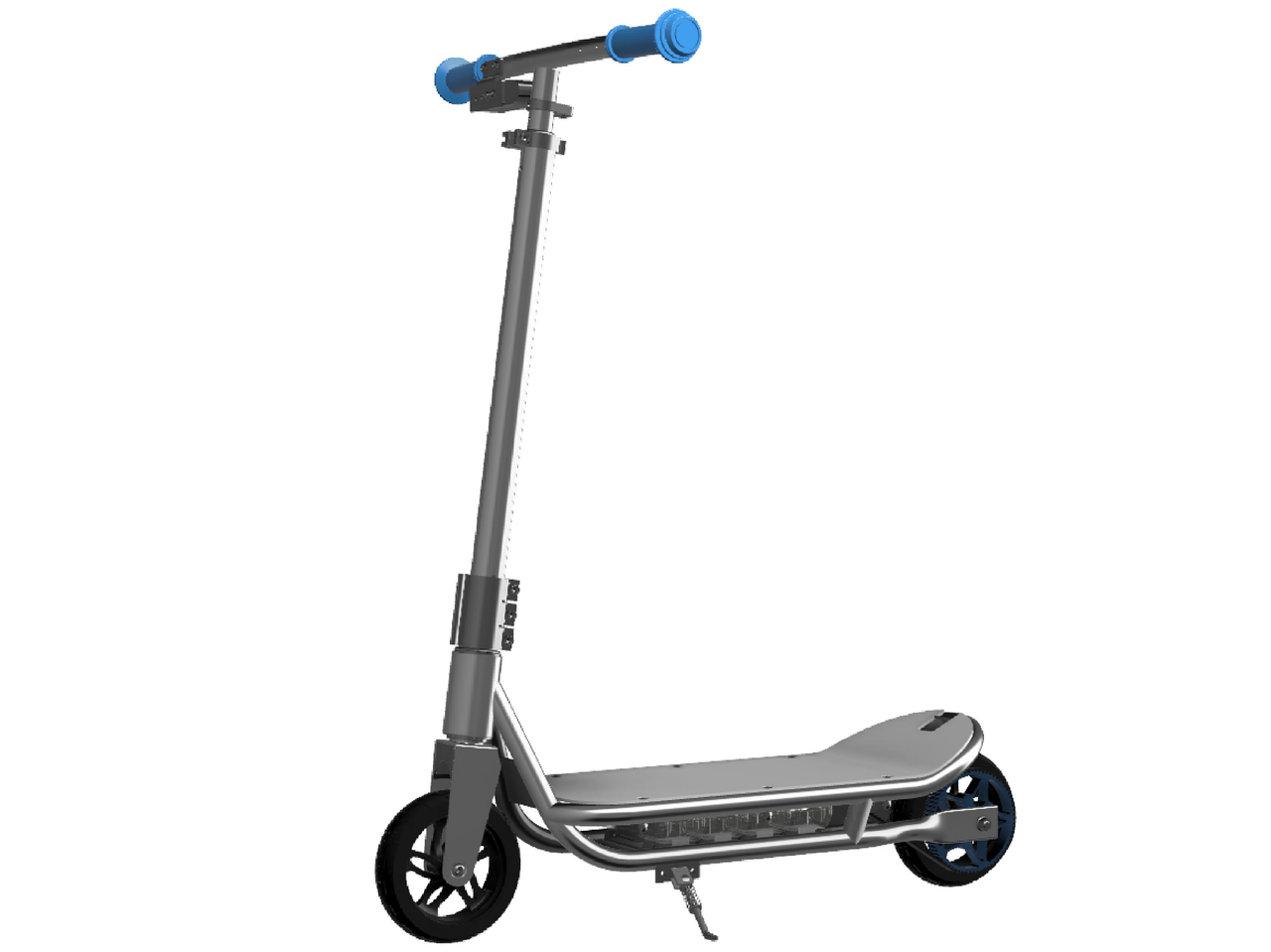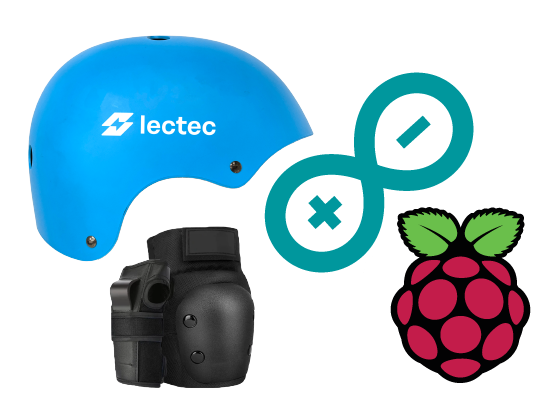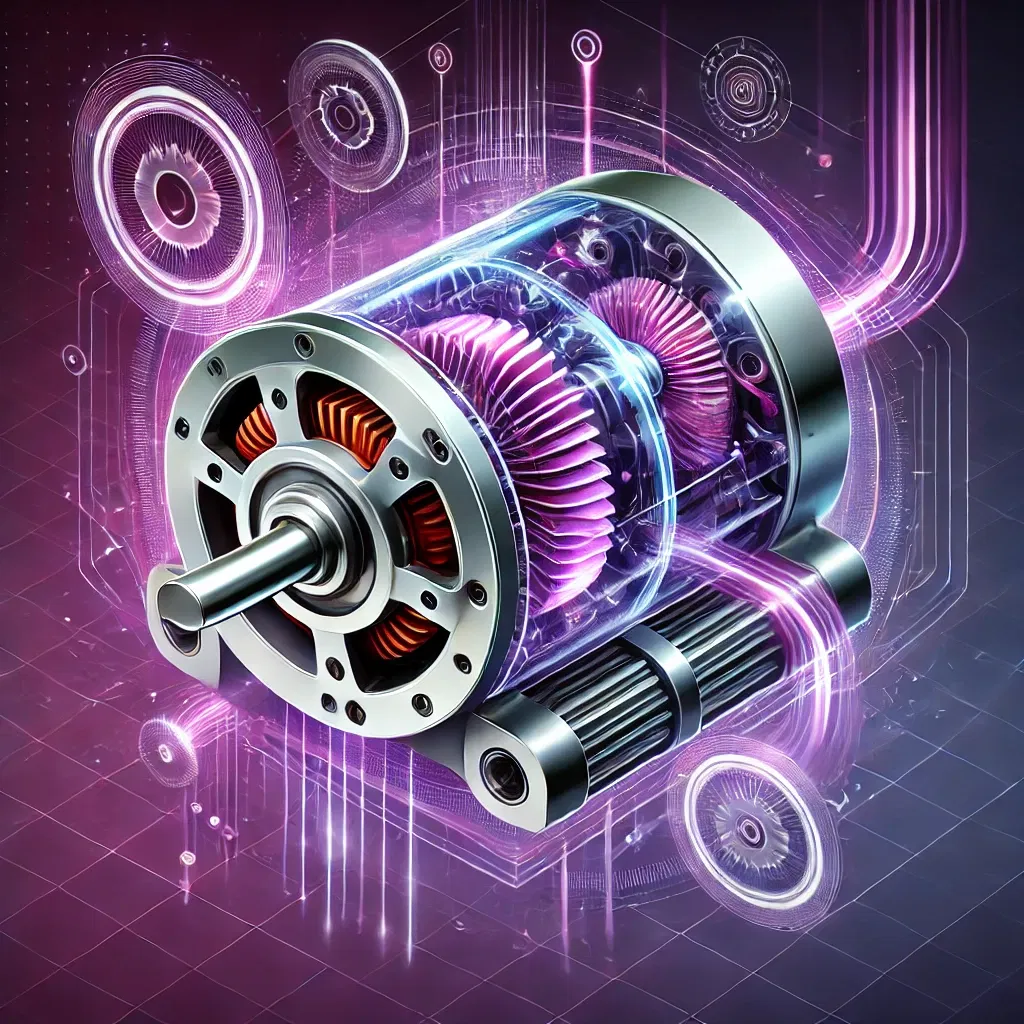Curriculum
Already purchased the curriculum? View the full lessons here
Lectec’s curriculum empowers students to explore advanced STEM concepts by building electric skateboards and electric scooters. Our standards-aligned lessons enhance critical thinking, problem-solving, and teamwork, while students develop valuable skills in engineering, physics, coding, and electronics. Designed to bridge the gap between education and the workforce, our curriculum prepares students for career readiness by offering hands-on, real-world applications that foster innovation and equip them with the skills employers demand in today’s tech-driven world.
Lectec’s Intro to Electric Vehicles curriculum, designed to pair seamlessly with our Electric Skateboard Kit V3, provides an engaging, hands-on introduction to the core technologies driving the EV industry. Aligned with EVSC standards, the curriculum takes students through foundational lessons on electrical principles, energy transfer, and motor performance, plus practical applications like analyzing real-time CANBus data, calculating energy efficiency, and exploring regenerative braking. This program not only meets educational standards but also inspires and equips students with the knowledge and enthusiasm to pursue careers in the growing e-mobility and EV workforce.
Electromagnetic Magic: From Fields to Forces
Overview:
Students will explore the energy conversion processes in an electric skateboard and apply equations to calculate the efficiency of the conversion between electrical, kinetic, and potential energy. Students will investigate the conversion of chemical energy to electrical energy, electrical energy to kinetic energy, and kinetic energy to potential energy. By collecting data through hands-on testing and applying relevant equations (below), students will gain a deeper understanding of energy conservation, efficiency, and the application of physics principles to real-world devices.
P = V × I
KE = ½ × m × v²
PE = m × g × h
Efficiency = (KE ÷ EE) × 100%
Subject:
High School Physical Science
Topics:
Power, electrical, kinetic, and potential energy
Standards:
NGSS: HS-PS3-5, HS-PS2-5
ISTE: 1.3.d,
1.5
Various other state standards, contact us for your specific state if needed
Sustainability & Resource Use of Electric Skateboards
Overview:
What are the various parts of your skateboard? Where on Earth might those resources be found? How are the resources obtained or transformed for use in a product like your PEV skateboard? Which resources cause the most environmental distress to obtain?
Subject:
Middle School Physical Science
Topics:
Resource usage, global resource distribution
Standards:
NGSS: MS-PS-1-3, MS-ESS3-4,
STEELS: 3.2.6-8.C
Various other state standards, contact us for your specific state if needed
The Science of Signals: Remote Control
Overview:
This lesson focuses on the principles of wireless communication, particularly how radio controllers operate electric skateboards through radio signals. Students will learn about the different components of a radio controller, including transmitters and receivers, and delve into the science of how signals are sent and received. The session will include an experiment to understand signal strength and interference without riding the skateboards.
Subject:
Middle School Physical Science
Topics:
Radio Waves
Standards:
MS-PS4-2
Various other state standards, contact us for your specific state if needed
Velocity & Energy, Scientific Method
Overview:
Reactivate their knowledge of measurement, velocity, kinetic energy, and potential energy. Practice the Scientific Method to create an experiment that builds understanding of the Law of Conservation of Energy.
Subject:
Middle School Physical Science
Topics:
Resource usage, global resource distribution
Standards:
NGSS: MS-PS3-1; MS-PS3-2; MS-PS3-5
ISTE: 1.4a
CC: 8.EE.A.1; 6.RP.A.3d; MP.1; MP.5
STEELS: 3.2; 3.4
Various other state standards, contact us for your specific state if needed
Conversion of Energy
Overview:
Use the skateboard to design an experiment that measures PE and KE on a ramp after engaging the motor.
Subject:
Middle School Physical Science
Topics:
Energy, velocity, conservation of energy; scientific method
Standards:
NGSS: MS-PS3-1; MS-PS3-2; MS-PS3-5
ISTE: 1.4a
CC: 8.EE.A.1; 6.RP.A.3d; MP.1; MP.5
STEELS: 3.2; 3.4
Various other state standards, contact us for your specific state if needed
Carbon Emissions
Overview:
Calculate the carbon emissions savings using an electric skateboard vs other means of transportation. Students observe the technical details of their skateboard’s battery to calculate its capacity and range. Then, they will calculate the carbon dioxide released by an electric skateboard vs. a car on a short trip. Lastly, they will reflect on their findings and explain the pros vs. cons of electric skateboards vs. gas-powered cars.
Subject:
Middle School Physical Science
Topics:
Environmental Impact, Ratios, Data, Transportation
Standards:
MS-ESS3-3, MS-ESS3-4, MS-ESS3-5, MS-ETS1-2
ISTE: 1.3d, 1.5.b, 1.7.d
CC: 6.RP, 7.RP, 7.NS,
7.EE
, 8.SP, L.4.3.A, L.7.3.A
Various other state standards, contact us for your specific state if needed
Motors & Gravity
Overview:
Use the skateboard on an incline to show how a mass pulls the object toward the bottom of the incline. Engage the motor and measure how much mass can be added before it overcomes the strength of the motor. Measure the time that it takes the skateboard to travel from the bottom of the ramp to the top of the ramp with various weights to observe and quantify the impact of mass on work performed.
Subject:
Middle School Physical Science
Topics:
Gravity, PE, KE, conservation of energy
Standards:
NGSS: MS-PS3-1, MS-PS2-2
STEELS 3.2.6-8.H, 3.2.6-8.L
Various other state standards, contact us for your specific state if needed
Force & Acceleration: Newtons Second Law
Overview:
Apply Newton’s Second Law of Motion to calculate the net force on an e-skateboard under varying conditions of mass and speed, helping them understand the relationship between force, mass, and acceleration. They will learn how to manipulate and measure physical variables such as mass, distance, and time with an experiment using the following equations:
a= 2 ×(Δd−vi×Δt)/Δt^2
F=m*a
Subject:
High School Physical Science
Topics:
Newton’s Second Law
Standards:
HS-PS2-1
Various other state standards, contact us for your specific state if needed
Colliding Objects & Newtons 3rd Law
Overview:
Use the Lectec electric skateboard kit to investigate collisions between the skateboard and stationary objects of different masses and sizes. They will explore how the mass and size of the stationary object affect the motion of the skateboard upon collision and how the skateboard exerts an equal and opposite force on the object. Students will then apply their understanding of Newton's Third Law to design a solution that minimizes the impact force on the skateboard during collisions, such as adding protective bumpers or modifying the skateboard's speed.
Subject:
Middle School Physical Science
Topics:
Newtons Third Law
Standards:
MS- PS2-1
Various other state standards, contact us for your specific state if needed
The Science of Skateboards and Mobility: A STEM ChallengeSignals: Remote Control
Overview:
Explore the implications of PEV’s for individuals with mobility challenges, and how the skateboard could potentially be adapted to serve this purpose. How would having a PEV be more efficient than a manual wheeled mobility device? What changes would you need to consider if the rider is seated instead of standing? Evaluate the designs of other classmates to determine the prototype that best addresses the design challenge.
Subject:
Mixed Use
Topics:
Design Challenge, STEM Design, Prototype creation, Design Thinking
Standards:
NGSS: ETS1-1, ETS1-2, ETS1-4
STEELS: 3.5.6-8.W (ETS), 3.5.6-8.N (ETS), 3.5.6-8.P (ETS)
Various other state standards, contact us for your specific state if needed
Introduction to Electric Vehicles
Overview:
Students will explore the history of electric vehicles (EVs) and personal electric vehicles (PEVs), learning how societal and technological advancements shaped their development. They will examine shared components such as motors, batteries, controllers, and regenerative braking.
By the end of this lesson students will be able to:
Describe the historical development of electric vehicles (EVs) and personal electric vehicles (PEVs), including key milestones and technological advancements.
Identify the shared components of EVs, such as batteries, motors, controllers, and regenerative braking systems, and explain their functions.
Analyze how societal, environmental, and technological factors have influenced the adoption and evolution of EVs.
EV Technician Standards:
Core Ideas: 3.0, 4.0, 5.0, 6.0, 7.0
Introduction to Electrical Principles
Overview:
Students will learn foundational electrical principles and calculate power, energy, and efficiency using basic equations. They’ll observe the motor and battery operation in the Lectec kit to connect concepts to real-world applications.
By the end of this lesson students will be able to:
Define and explain key electrical concepts, including voltage, current, resistance, and power, and their roles in electric circuits.
Apply Ohm's Law to calculate voltage, current, or resistance in practical scenarios.
Connect foundational electrical principles to real-world applications in electric vehicles.
EV Technician Standards:
1.01
1.02
1.03
Circuit Basics
Overview:
Students will identify components in the Lectec kit’s pre-assembled circuits (e.g., motor, battery, LEDs). They will classify how these components contribute to open and closed circuits. Lastly, they will categorize series & parallel circuits and analyze impacts with Ohm’s law.
By the end of this lesson students will be able to:
Identify and define key circuit components and their roles in open, closed, series, and parallel circuits.
Interpret circuit diagrams and symbols for components like batteries, resistors, and motors.
Construct and analyze a series circuit using the Lectec kit, explaining each component's function.
EV Technician Standards:
1.08
1.10
Energy Transfer in EV Systems
Overview:
Students will trace energy flow from the Lectec kit’s battery through its motor. They will map how each component serves as either a source, pathway, and load in the circuit. Lastly, they will analyze each component using Ohm’s Law to differentiate materials between conductors an insulators.
By the end of this lesson students will be able to:
Diagram the energy transfer process in an electric vehicle system.
Analyze the roles of sources, pathways, and loads in EV circuits.
Apply Ohm’s Law to evaluate the efficiency of conductors and insulators in energy transfer.
EV Technician Standards:
1.S
2.12
1.06
1.S5.14
Communication and Data Systems
Overview:
Students will learn about the CANBus network and its functions both in the Lectec kit and EVs. They will be introduced to how data packets are transmitted from the ESC to their devices via Bluetooth Low Energy technology. They will review live data feed examples from the Lectec kit and analyze data patterns.
By the end of this lesson students will be able to:
Explain the purpose and function of the CANBus network in enabling real-time communication between EV components.
Analyze data packets to interpret how information flows through the CANBus and contributes to system performance.
Use the VESC Tool to monitor and evaluate real-time metrics such as current, temperature, RPM, and rotor position to optimize EV performance.
EV Technician Standards:
7.07
Torque, Power, and Efficiency in EV Systems
Overview:
Students will learn theoretical concepts about energy flow and efficiency. They will discuss energy efficiency by comparing power input vs. output. Students will calculate this in real-time with a guided example using the CANbus data
By the end of this lesson students will be able to:
Explain the relationship between torque, power, energy, and efficiency in EV systems.
Analyze real-time data to draw conclusions about EV performance and energy usage.
Apply their knowledge to evaluate and optimize the efficiency of EV systems in real-world scenarios.
EV Technician Standards:
1.04
1.07
Wattage Analysis (PWM & Battery Sag)
Overview:
Understand and apply Watt’s Law in theoretical examples. Then, using the Lectec kit’s motor and battery, students will calculate the wattage consumed and compare it to CANbus data for system validation.
By the end of this lesson students will be able to:
Analyze and calculate wattage in electric vehicle systems using real-time data and observed performance.
Identify and explain the effects of PWM and battery sag on voltage, current, and wattage.
Conduct an experiment to measure and evaluate battery sag, calculating its impact on power delivery during high-demand scenarios.
EV Technician Standards:
1.05
1.S5.15
Energy Storage and Batteries
Overview:
Students explore how series and parallel configurations impact battery voltage, capacity, and energy output, focusing on accurate calculations using nominal voltage. Hands-on demonstrations with the Lectec RailCore system show how series connections increase voltage, while parallel connections increase capacity. Students learn how these configurations optimize EV battery performance and runtime in real-world applications.
By the end of this lesson students will be able to:
Explain the structure and function of battery components (cells, modules, and packs) and their role in energy storage for EVs.
Differentiate between various battery chemistries (e.g., LFP, NMC, NCA) and their impact on performance, safety, and cost.
Perform calculations using Ampere-hours (Ah) and Kilowatt-hours (kWh) to analyze energy capacity and range in real-world EV scenarios.
EV Technician Standards:
1.11
4.03
4.04
4.S7.24
EV Charging Systems
Overview:
Students will calculate estimated charging times for the Lectec kit’s battery. Discuss efficiency implications for faster charging options. Real-time CANBus data will confirm battery charge and capacity.
By the end of this lesson students will be able to:
Differentiate between Level 1, Level 2, and DC fast charging systems and their applications.
Calculate charging times using battery capacity, charger power, and real-world data.
Design and conduct experiments to test specific factors influencing EV range.
EV Technician Standards:
5.01
5.02
5.S4.07
5.S5.08
Motor Components and Technologies
Overview:
Students will examine the Lectec kit motor. They’ll compare motor data (e.g., efficiency, power output) to theoretical motor types and discuss applications of each technology (e.g., brushless DC).
By the end of this lesson students will be able to:
Identify key components of an EV motor and their functions.
Compare different motor technologies, including their advantages and limitations.
Select the appropriate motor type for a given use case based on performance criteria.
EV Technician Standards:
3.06
3.07
3.08
3.09
Gear Ratios and Range Optimization
Overview:
Students will use motor data from the Lectec kit to calculate speed and acceleration, applying drive ratio equations. They’ll analyze range impacts under simulated driving conditions.
By the end of this lesson students will be able to:
Calculate drive ratios, motor RPM, top speed, and motor power to analyze EV performance.
Identify and evaluate factors that affect EV range and propose methods for optimization.
Design and conduct experiments to test specific factors influencing EV range.
EV Technician Standards:
3.S5.17
3.S5.18
5.S2.05
7.05
Regenerative Braking and Throttle Control
Overview:
Students will analyze real-time CANBus data showing braking regeneration and throttle response, discussing how these technologies improve efficiency.
Concepts:
Focuses on advanced EV technologies that enhance energy recovery and driver experience.
EV Technician Standards:
7.06
7.S2.07
Ready to take the next step?
Request a quote today.
Request a Quote
Need some more info?
Schedule a demo to talk to a team member
Schedule A Demo











